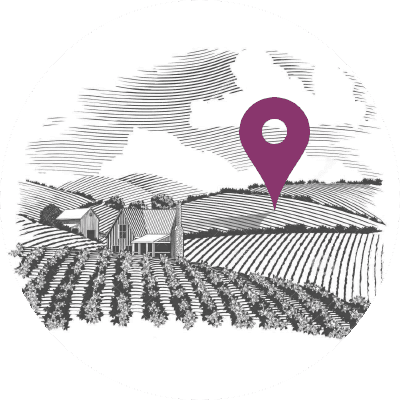Nerello Mascalese
An error occurred while loading the products.
Reload the products
Reload the products
No products found
Use fewer filters or remove all
Use fewer filters or remove all
Autochthonous
(Locale)

Nerello Mascalese
| Area type | Autochthonous |
| Color type | Red grape |
| Vigor | Excellent |
| Features | Leaf: large, pentagonal, trilobate (with two other lobes just mentioned); Limbs (open or closed), or closed with overlapping edges; Upper lateral breasts generally closed, with overlapped edges, sometimes V-shaped, open or narrow with parallel edges; Lower lateral, not very pronounced, V-shaped or narrow V with parallel edges; Lobes marked, almost flat; Corner at the top of the obtuse terminal lobes; Green-bottle color top page, wavy flap surface, dull, glabra; Bottom page of light green, spotted; Green ribs, upper and lower ribs; Lower ribs of 1st and 2nd order, sub-lanugginose; Protruding those of 1st, 2nd and 3rd order; Irregular, pronounced and mucous teeth; At concave margins or concave on one side and convex on the other, some even crocheted; Wide base.Bunch: Large, long 20-25 cm long, conical, medium length and pyramidal, with one or more wings more or less developed, of medium to compact appearance; Visible peduncle, woody to the first branch; Medium, green pedicel; Evident wounds with warts, green; Short brush, light green.Acino: medium, sub-ellipsoid, of regular shape, with regular cross-section (circular or sub-elliptical); Light-colored skin, regularly distributed, very pruneous, thick and consistent; Persistent and prominent navel; Juicy and soft flesh, simple and sweet flavor, straw yellow juice, very tiny. |
| Features wine | Provides wines of a fine ruby garnet in the aging, very frequent for this grape thanks to its acid input. As the Mascalese Nerello grows, the wine dresses orange and brick in refinement. The olfactory range is generally delicate and complex, with strong aromas provided by the volcanic area where it is cultivated. Colors are, however, discharged as high acidity advises consumption ever after aging, which brings these wines to very high levels, comparable to burgundy, with the grape that could rightly become part of the world's great red nobles. Characteristic are also tannins that are strong and well present. The aromas are, however, delicate and span from the purple floral and the roses to the red fruity, to the tertiary sensations of aging, touched by vanilla notes. Nevertheless, the refined dough preserves very polished tannins, a soft taste and a perfect balance. |
| Growing areas | It is spread in Sicily and Calabria. |
| History | The variety takes its name from the Mascali plain between Mount Etna and the coast where it is thought to have originated – a small portion of older vines predate the phylloxera epidemic of the 1880s. The prefix Nerello refers to the black color of the grapes, and is shared by Nerello Cappuccio, Nerello Mascalese's most common blending partner. |
| Notes | Resistance to parasites and other adversities: Resists well to diseases and parasites in general, less to anxiety. In certain vintages with unfavorable meteorous trends, often in bunches, incomplete growth stems, which remain green or reddish, especially in the highest areas. |
| Productivity | Abundant and not always constant. |
| Ripening period | Last decade of September and before October. |
| Synonyms | niureddu mascale, nerello, nireddu, nierello. |
| Type | Neutral |

